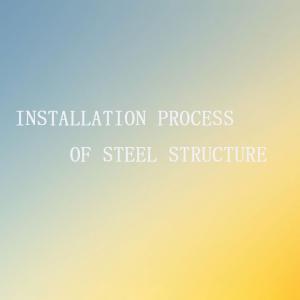steel structure workshop demolition price
The dismantling price of Steel structure workshops is not a simple fixed value, but is influenced by the interaction of numerous complex factors.The scale and structural characteristics of the Steel structure workshop itself are the fundamental factors determining the price. A large and towering steel structure workshop requires the construction of a larger and more stable scaffolding system during demolition, as well as the leasing of large equipment such as long arm cranes, which undoubtedly significantly increases equipment rental costs and labor investment costs. For example, a large steel structure production workshop that covers an area of thousands of square meters and has a height of over 20 meters is much more difficult to dismantle compared to a small, simple Steel structure warehouse that covers several hundred square meters and has a lower height, and the price may differ several times. Furthermore, if the workshop structure is complex, containing a large number of irregular components, multi-layered nested structures, or precise ancillary facilities, professional technicians need to perform detailed disassembly during the dismantling process to ensure the safe recycling of some components, which will also increase the overall dismantling cost.
The site conditions for demolition construction also have a significant impact on prices. If the steel structure workshop is located in a bustling area in the city center with traffic congestion and dense population, stricter traffic diversion measures, more safety warning signs and protective fences need to be taken during demolition operations, and construction can only be carried out during specific time periods to minimize interference with surrounding residents and commercial activities. These additional requirements will lead to an extension of the construction period and a significant increase in labor and material costs. On the contrary, steel structure workshops located in remote suburban areas with open surrounding environments are relatively easy to dismantle, and the cost will also be reduced.
The dismantling method and equipment selection are key variables that affect the price. Although traditional manual demolition methods have lower costs, they are inefficient and only suitable for small steel structure partial demolition or scenarios that require extremely high demolition accuracy. Using mechanical dismantling, such as using specialized equipment such as hydraulic shears and crushers, although greatly improves efficiency, the equipment purchase or rental costs are high. Especially for some large steel structure workshops, multiple devices may need to work together, further increasing costs. If blasting demolition is adopted as an efficient but highly dangerous method, in addition to requiring a professional blasting team and strict approval procedures, comprehensive protection and monitoring of surrounding buildings and facilities are also required, which is costly.
Market environmental factors cannot be ignored either. In areas with fierce competition in the demolition industry, prices often fluctuate due to market supply and demand adjustments. When there are a large number of dismantling companies in the market and the business volume is relatively insufficient, some companies may lower their quotations in order to compete for projects. In areas with high demand for demolition and scarce professional demolition teams, prices will correspondingly increase. In addition, the differences in economic development levels among different regions will also be reflected in prices. The labor costs, equipment rental costs, and disposal costs caused by environmental requirements in economically developed areas are relatively high, leading to a surge in the demolition prices of steel structure workshops.
The increasingly strict safety and environmental standards have also added a lot of weight to the demolition price. To ensure the personal safety of construction personnel, it is necessary to equip them with complete safety protection equipment, such as safety helmets, safety belts, protective nets, etc., and conduct regular safety training and drills. In terms of environmental protection, the large amount of construction waste generated during the demolition process needs to be classified, transported reasonably, and disposed of properly. Special treatment is required for materials containing harmful substances, and this series of environmental protection measures require additional funding investment.





